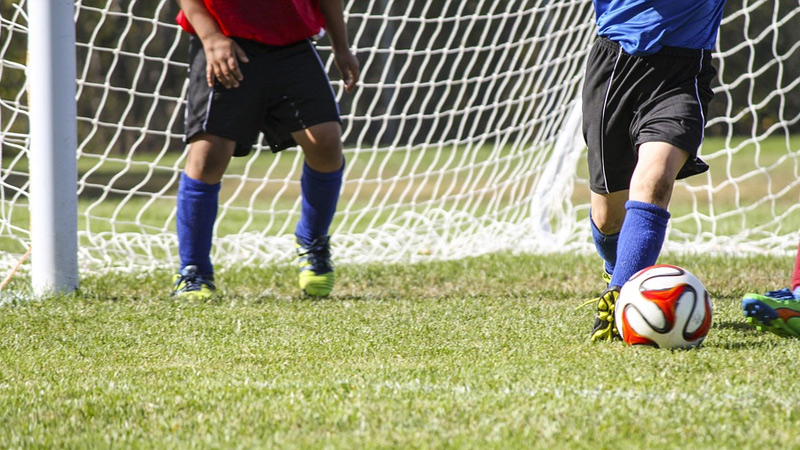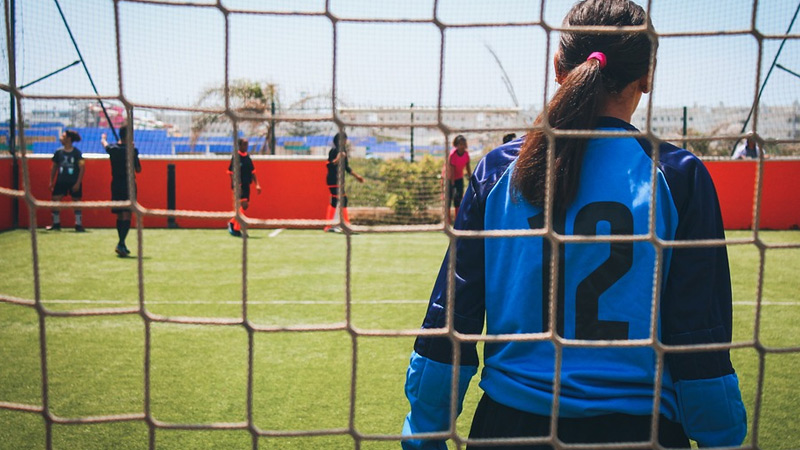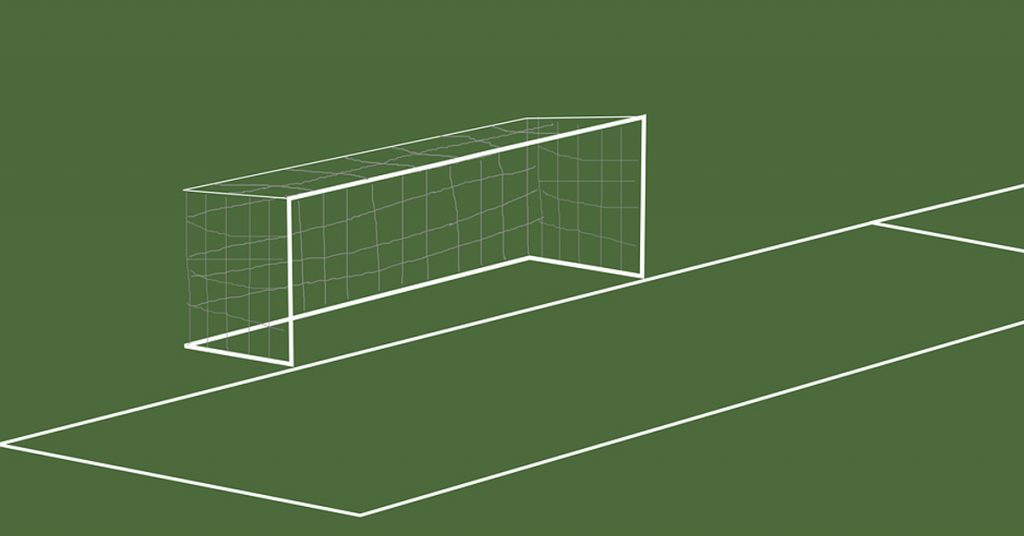Authority Soccer (authoritysoccer.com) is a participant in the Amazon Services LLC Associates Program, an affiliate advertising program designed to provide a means for sites to earn advertising fees by advertising and linking to Amazon.com. This site also participates in other affiliate programs and is compensated for referring traffic and business to them.
Every soccer field has white markings painted onto it, and we have no issues distinguishing what the majority of them are there for. However, there’s one marked area that often brings up a ton of questions among soccer fans around the world. This area is called the six-yard box:
The six-yard box, also known as the goal area, is a rectangle that every soccer field has. The six-yard box’s main purpose is to limit where the ball can be placed by the goalkeeper when a goal kick is called and needs to be taken. It is located inside a bigger rectangle-shaped area, called the penalty area.
Six-yard box is a common source of confusion among soccer fans, so we’ve decided to dedicate this article to explain its purpose and some intricacies related to this soccer field area, as well as answering some of the most commonly asked questions related to the six-yard box. Enjoy the reading!
What is a six-yard box in soccer?
There are numerous soccer fans who are confused by the two boxes that are located in front of each goal. The larger box is called the 18-yard box, or the penalty area. The smaller one is our topic of the day – the six-yard box.
A six-yard box in soccer is an area in front of each goal on the soccer field, defined by two lines that start on the goal line six yards from the goalposts and extend six yards into the field of play from the goal line. This means that the six-yard box is a rectangle whose one side is six yards, while the longer side that is parallel to the goal line is 20 yards.
The defending team can take any free-kick, as well as goal kicks, from anywhere inside the six-yard box. Indirect free kicks that the referee awards to the attacking team within the six-yard box are taken from the point on the six-yard line (the 20 yard-long one) closest to where the violation occurred. Indirect free kicks can’t be taken any closer to the goal than this line.
What is the purpose of a six-yard box in soccer?

There are many purposes that the six-yard box has, but there’s one main one: The main purpose of the six-yard box is to limit the area in which the goalkeeper can place the ball and kick it into play after a goal kick has been awarded to their team.
The six-yard box also serves the purpose of clearly defining the area in which restarts occur:
- For direct and indirect free kicks to the defense, the ball restart can be done from anywhere within the six-yard box. Generally, the outer edge of the six-yard box is chosen for this purpose.
- For a dropped ball restart that included the ball being within the goal area, the ball is brought back into play from the closest point on the six-yard line.
- For an indirect free kick that occurred within the goal area and was awarded to the attacking team, the ball is restarted from the point on the six-yard line closest to where the infringement occurred, as mentioned before.
While goal kicks are a common occurrence in soccer, a dropped ball restart, as well as an indirect kick for an attacking team, are not nearly as common in modern soccer. A dropped ball is awarded if the ball touches the referee during a promising attack, which is not something we see every day.
The goalkeeper also can’t handle a ball that has been deliberately kicked to him if the ball doesn’t touch another player or goes out of play along the way. Otherwise, an indirect free kick is called by the referee.
Can a goalkeeper be touched in the 6-yard box?
Before 2006, the goalkeeper was literally untouchable within their own six-yard box. In 2006, however, new rules were implemented, meaning that today, not every contact with a goalkeeper in the six-yard box leads to a foul on the keeper and a card. Most competitions and their referees still maintain much stricter foul rules when goalkeepers are involved. Intentional ones lead to an immediate red card, while less severe ones are rarely tolerated.
This means that a goalkeeper can be touched in the six-yard box, but that referees will still blow the whistle for even the slightest infringement that would go unnoticed elsewhere on the field. This is especially true with referees who started their jobs with the old rule.
If the foul on the goalkeeper is called in the six-yard box, a free kick is awarded to the defending team. The free-kick is taken from the point on the six-yard line closest to the violation, as explained before.
Can you be offside in the six-yard box?

You can be offside in the six-yard box if certain conditions aren’t met. As we know, players can even be in an offside position but not offside. Even though it seems complicated, the things are pretty straight-forward. You are not offside if one of the following conditions is met:
- You are not offside if you receive the ball directly from a goal kick, a corner, or a throw-in.
- You are not offside on your own half of the field.
- You are not offside if you are level with the second-last defender.
- You are not offside if you are level or behind the ball.
- You are not offside if you are not actively involved in the play.
While you can be offside within the opponent’s goal area, you are not offside if one of the bullet points listed above applies to your situation.
An offside in a six-yard box leads to an indirect free-kick that is taken from the six-yard line. Usually, the goalkeeper performs the kick.
The six-yard box might seem unnecessary at first glance, but it is one of the most important defensive areas on the field. It is much more than just a spot from which a goal kick is taken.

